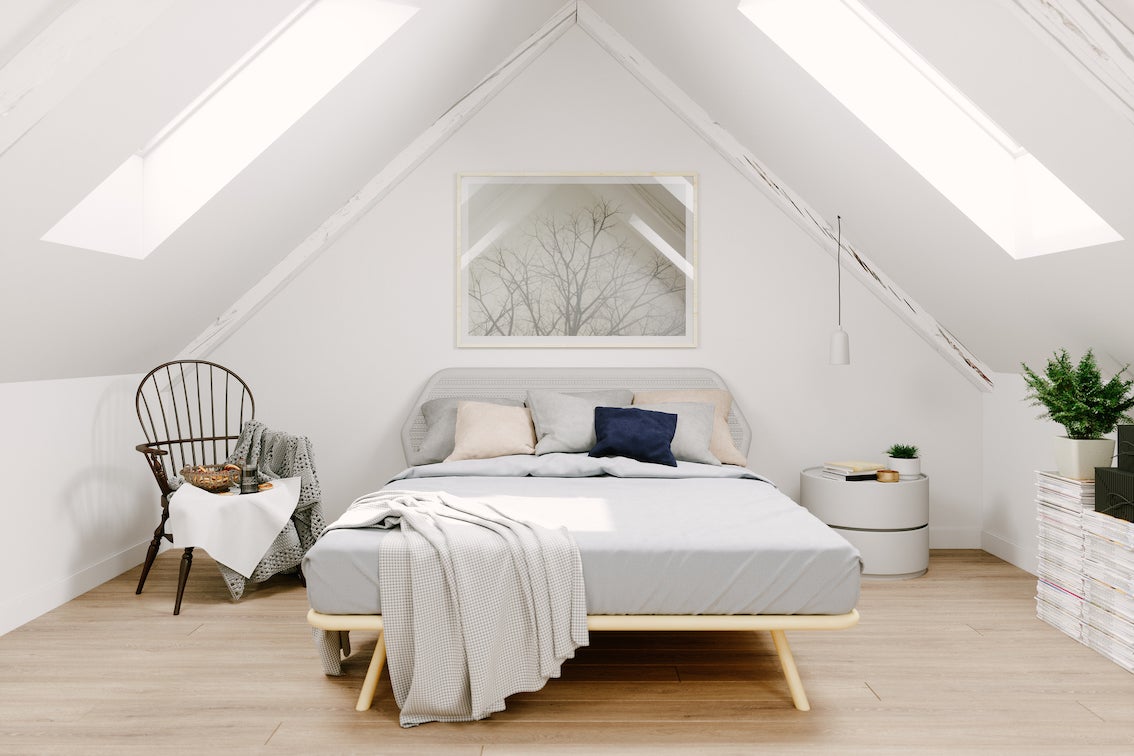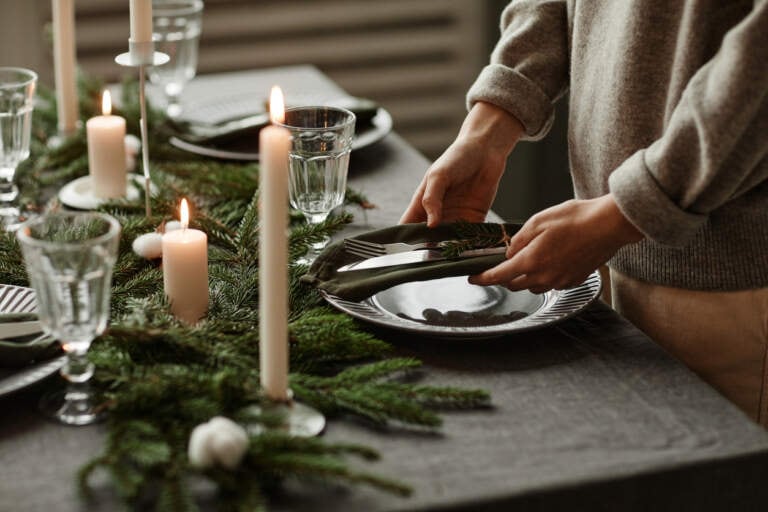When it comes to striking the balance between style and comfort, Scandinavian interior design takes the cake. Scandinavia is known for its dark and long winters, so mastering the art of a cosy, comfortable home is essential.
Scandinavian interior design emphasises simplicity, functionality, and minimalism and is commonly used in the Nordic countries Denmark, Iceland, Norway, Sweden and Finland.
Simple, purposeful and peaceful, Scandinavian design focuses on soft, light and neutral colours, open space, natural materials and cosy textures to evoke a calm and tranquil space.
The Foundations of Scandinavian Design
Scandinavian interior focuses on a less is more mentality. It incorporates minimalist designed furniture, a neutral colour palette and no clutter. Despite the minimal nature of Scandinavian designs, warmth and cosiness are key.
Scandinavian house interior takes on two key characteristics: ’hygge’ and ‘lagom’.
HYGGE
Hygge (pronounced ‘hoo-gah’) is a Danish term roughly translated to ‘comfortable’ and ‘cosiness’.
LAGOM
Lagom is a Swedish word meaning ‘just right’. Scandinavian design is all about balance and moderation.
Key Elements of Scandinavian Interior
The Scandinavian design philosophy is as relevant now as ever–less is more. In our hyper-consumerist world, quality furniture that is built to last is a must.
If you’re drawn to light, clean and minimalist furniture and home decor, Scandinavian design may be for you. By incorporating soft, neutral colours, natural materials and textures and open space, Scandinavian-designed homes emphasise light colours and natural light, which can be sparse in Nordic countries.
Quality Over Quantity
Quality pieces and craftsmanship is essential to Scandinavian interior design. Look for high-quality, durable and versatile pieces. Practical furniture doesn’t mean it’s not stylish–timber pieces are naturally beautiful and long-lasting.
Cosy Textiles
Despite Scandinavian interior’s minimalist design, cosy textures are essential. Add warmth to the home with linen quilts, cotton and wool throws, faux furs, and textured materials such as a jute rug. Keep it neutral or add a pop of colour.
A Mix of Modern and Vintage Furniture
The key to Scandinavian design is durable, sturdy furniture that is built to last. Avoid bulky furniture and go for key pieces that are practical, especially those with additional storage space.
Scandinavian furniture is generally crafted from natural materials like wood and is light in shade. Commonly, Scandinavian style furniture is made of ash, beech or pine featuring subtle grains and very few dark markings. Light timbers or furniture painted pale, white or pastel are the go-to. For a pop of colour, go for gingham or pastel-coloured sofas or armchairs.
For a more vintage touch, seek out mid-century modern designs, which are popular and fairly easy to find. Mid-century modern furniture tends to feature clean, simple lines, made of natural materials–they fit right into the practical, simplistic nature of Scandinavian design. From leather accent chairs to simple sideboards, mid-century modern style furniture is generally well-designed and built to last.
Light Wooden Floors
Carpet is rarely used in traditional Scandinavian house design. Go for light wooden floors to create a light, airy and spacious feel. Add warmth to the space with a jute or wool rug.
Natural Materials
Scandinavian designs favour natural elements, like light wood, house plants and natural textiles like wool, sheepskin, jute and linen. Not only is Scandinavian design furniture often made from timber, ash and pine, but Scandinavian decor is usually crafted with natural materials, too. Woven baskets, wooden wall hooks and wall shelves, wooden frames, light-coloured ceramic vases and linen cushions are great choices.
Contrast
Contrast doesn’t just apply to colours, but to shape, size, texture and even mood. Most interior styles rely on contrast. In the case of Scandinavian design, contrast old and new furniture and pieces, straight and curved lines, neutral and bright colours and light and dark neutrals. You can use your walls, floors, furniture, light fixtures and artwork to find the perfect balance.
Clutter-Free
Simplicity is key when it comes to Scandinavian interior design. There are plenty of benefits to keeping your home clutter-free. As the saying goes, ‘a messy room is a messy mind’. Light and open spaces evoke a sense of calm and tranquillity.
Just like lagom suggests, Scandinavian interiors emphasise balance–not too much, not too little. Scandinavian interior design focus on practicality and comfort, with minimal clutter so there’s plenty of room to breathe and move. Avoid unnecessary decor and accessories and emphasise open spaces for a true Scandinavian house design.
Because Scandinavian design focuses on functionality, go for decor pieces that double as storage space, whether it’s beautifully crafted storage racks or a storage ottoman.
Light, Earthy Neutral Colour Palette
When designing your Scandinavian interior home, think of nature’s earthy tones. Take inspiration from the outdoors–wood, stone, sand, dirt, blue skies and green grass. Jute rugs, woven baskets, light wooden flooring and furniture crafted from light timber can help you create an airy, nature-inspired home.
Greenery
Scandinavian house design leans more towards a neutral colour palette. Don’t shy away from house plants and fresh flowers to add some colour and an earthy, natural element to your home. Go for unstructured floral arrangements and a focal houseplant such as a snake plant, fiddle leaf, rubber fig or a monstera.
Scandinavian Design Summed Up
Like most interior designs, Scandinavian design is always evolving. Newer trends can easily fit with the key elements of Scandinavian design to create a unique fusion such as bohemian or mid-century modern interior styles. Despite the ever-changing nature of Scandinavian interiors, the core philosophy of hygge and lagom stand true–balance, moderation and cosiness.








